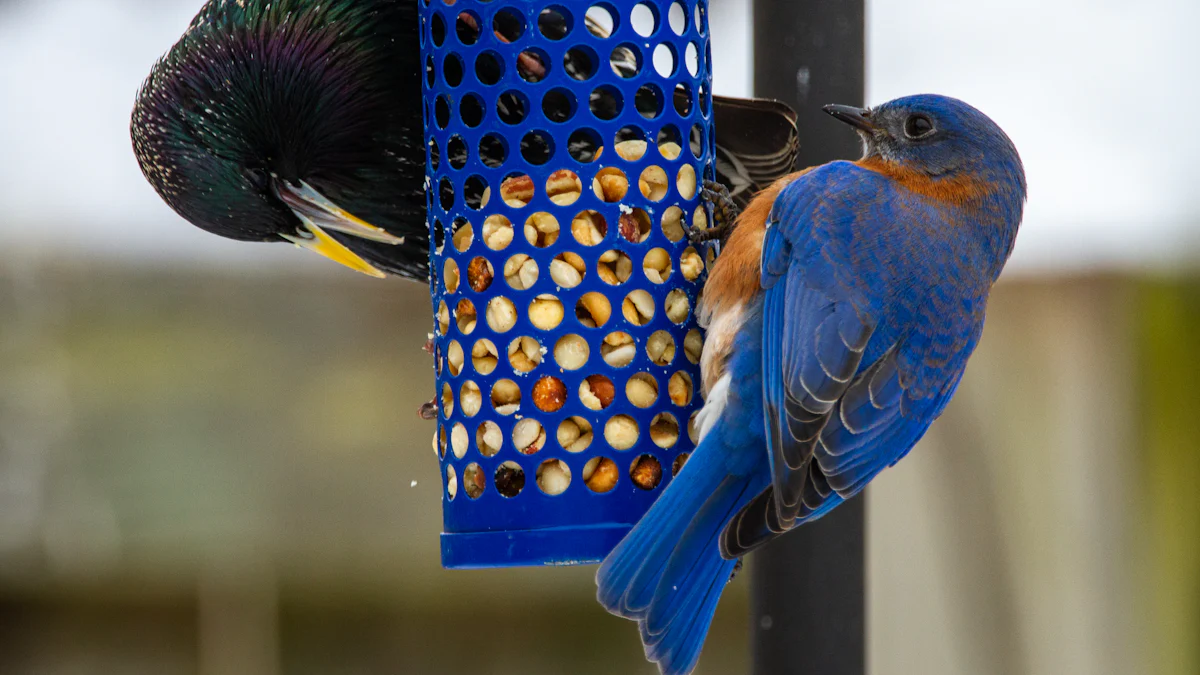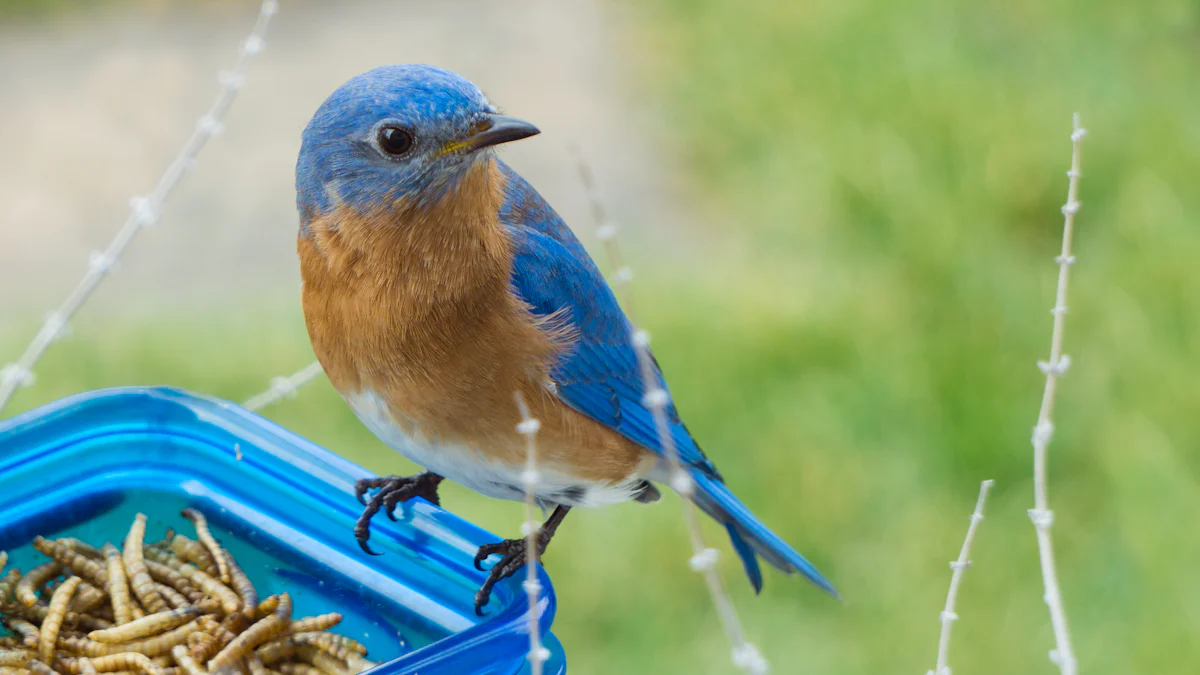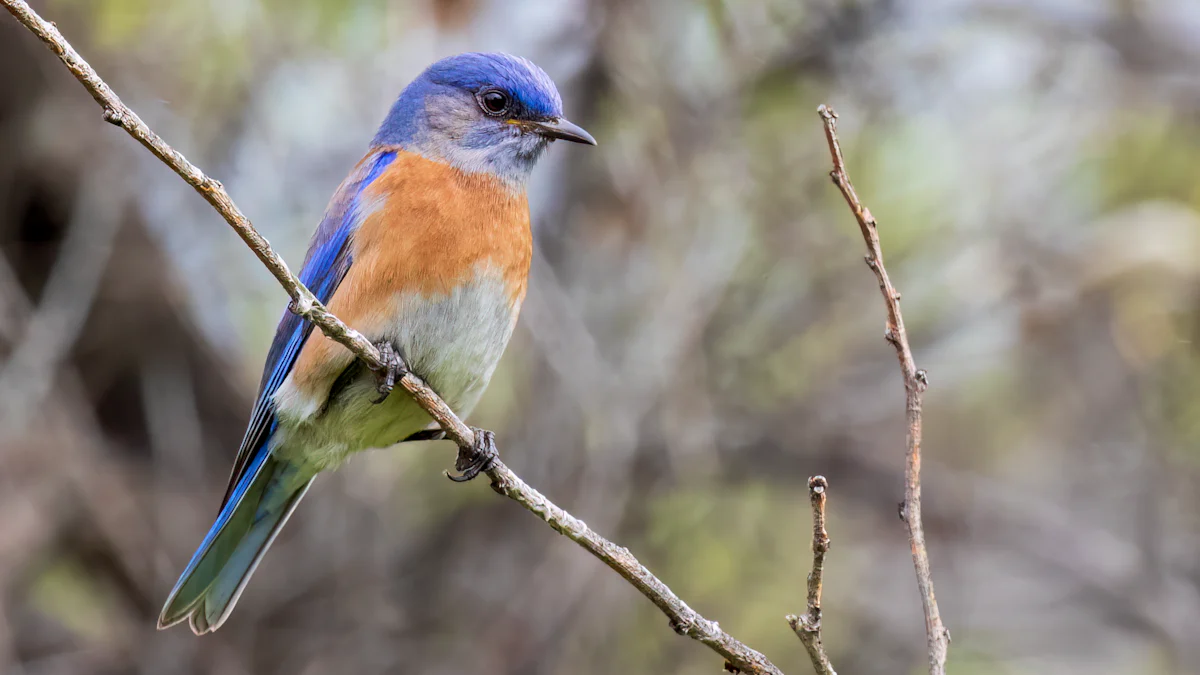
Dried mealworms for birds are packed with protein, fats, and fiber, making them an excellent food source all year round. They provide essential nutrients like B vitamins, iron, and zinc, which support energy, growth, and immune health. Soaking them in water also offers hydration, especially during hot summer months, benefiting wild birds greatly.
Key Takeaways
- Dried mealworms are healthy for birds. They have protein, fats, and vitamins that help birds grow and stay active.
- Soaking dried mealworms in water makes them tastier and gives birds water, which is helpful during hot summers.
- Feeding dried mealworms brings many bird types, perfect for bird lovers who want to see different birds.
Nutritional Benefits of Dried Mealworms for Birds

High Protein for Energy and Growth
Protein is essential for birds, and dried mealworms for birds deliver it in abundance. With a protein content of around 50-55%, they outshine many other bird food options. This high protein level supports muscle development, feather growth, and energy production. Birds need extra energy during migration, breeding, or cold weather, and mealworms provide the boost they require.
Did you know? Dried mealworms contain more protein than live ones because the drying process removes water, concentrating the nutrients.
Here’s a quick comparison of their nutritional value:
| Nutritional Component | Dried Mealworms | Live Mealworms |
|---|---|---|
| Crude Protein | 50% – 55% | Lower than dried |
| Crude Fat | 24-25% (min.) | Lower than dried |
| Crude Fiber | 6-9% (min.) | Lower than dried |
| Moisture | 4-6% | Higher than dried |
This makes dried mealworms a superior choice for birds needing energy and growth support.
Rich in Fats, Fiber, and Essential Nutrients
Dried mealworms for birds are not just about protein. They also pack healthy fats, fiber, and essential nutrients like B vitamins, iron, and zinc. These components promote digestion, improve feather quality, and enhance overall vitality. The fats provide a quick energy source, especially for birds during high-activity periods like nesting or migration. Fiber aids in digestion, ensuring birds stay healthy and active.
A Natural and Balanced Food Source
Dried mealworms mimic the natural diet of many wild birds, making them an excellent choice for bird enthusiasts. They offer a balanced mix of nutrients without artificial additives. Birds instinctively recognize mealworms as food, encouraging them to forage naturally. This makes dried mealworms not only nutritious but also a way to support birds’ natural behaviors.
How Dried Mealworms Support Bird Health and Behavior
Strengthening Immune Systems
Birds rely on a strong immune system to stay healthy, especially during challenging seasons like winter or breeding months. Dried mealworms for birds are packed with protein, fatty acids, vitamins, and minerals that help maintain healthy organ function. These nutrients play a key role in boosting immunity and overall vitality.
- Protein supports muscle repair and energy production.
- Fatty acids improve cell health and energy storage.
- Vitamins and minerals, like B vitamins and zinc, strengthen the immune system.
Offering dried mealworms during colder months or when birds are breeding ensures they get the energy and nutrients they need to thrive.
Supporting Breeding and Nesting
Breeding and nesting require extra energy and nutrients. Dried mealworms provide high protein content, which is essential for growth and repair. They also contain B vitamins that support metabolism and minerals like calcium, which are vital for egg production. Birds like bluebirds and robins benefit greatly from these nutrients during the breeding season.
Adding mealworms to a bird feeder during this time can help parents feed their chicks and maintain their own health. This makes dried mealworms an excellent choice for supporting birds during these critical periods.
Encouraging Natural Foraging Instincts
Dried mealworms mimic the natural diet of many wild birds, encouraging them to forage as they would in the wild. Birds instinctively recognize mealworms as food, making them a great way to promote natural behaviors.
- Place mealworms in bird feeders to attract species like woodpeckers and robins.
- Scatter them on the ground to encourage ground-foraging birds.
- Use platform feeders to draw in a variety of species.
This approach not only supports birds’ natural instincts but also creates an enjoyable experience for bird enthusiasts watching them forage.
Practical Benefits of Dried Mealworms for Bird Enthusiasts
Long Shelf Life and Easy Storage
Dried mealworms are a convenient choice for bird enthusiasts because they last longer than many other bird food options. Their shelf-stable nature means they don’t require refrigeration, though proper storage is essential to maintain quality. Keeping them in an air-tight container, away from light and moisture, prevents spoilage. For extended freshness, storing them in a freezer or refrigerator works best.
Here’s a quick comparison of storage requirements:
| Product Type | Shelf Life | Storage Requirements |
|---|---|---|
| Dried Mealworms | Shelf-stable | Store in an air-tight container, preferably in a freezer or refrigerator. |
| Other Bird Foods | Varies | Depends on the product; some may require refrigeration. |
This ease of storage makes dried mealworms a practical option for those who want to keep a steady supply without frequent trips to the store.
Attracting a Variety of Bird Species
Dried mealworms for birds are a magnet for many species, especially insect-eating ones. Bluebirds, robins, wrens, and woodpeckers are just a few examples of birds that love them. Even chickadees and orioles find them irresistible. Their high protein and fat content make them particularly appealing during breeding and migration seasons when birds need extra energy.
Bird enthusiasts often notice that offering dried mealworms attracts species they wouldn’t typically see in their backyards. This makes them an excellent choice for anyone looking to enjoy a diverse range of feathered visitors.
Simple to Use in Feeders or Mix with Other Foods
Using dried mealworms is straightforward. They can be placed in specialized feeders to prevent wastage or scattered on the ground to encourage natural foraging. Mixing them with seeds or fruits adds variety to birds’ diets, ensuring they get a balanced range of nutrients.
Rehydrating dried mealworms by soaking them in water makes them more palatable and provides hydration, especially during hot summer months. Offering them alongside a water source further supports birds’ health and digestion.
Tip: Clean feeders regularly to maintain hygiene and prevent disease.
These practical benefits make dried mealworms a favorite among bird enthusiasts who want to care for their feathered friends with minimal effort.
Tips for Feeding Birds with Dried Mealworms

Soaking Mealworms for Hydration
Soaking dried mealworms before feeding them to birds can make a big difference, especially during hot summer months. This simple step increases their moisture content, providing hydration when water sources might be scarce. To soak them, place the mealworms in a heat-resistant cup, pour boiling water over them, and let them sit for 30 minutes to an hour.
Here’s why soaking is beneficial:
- It enhances the mealworms’ palatability, making them more appealing to birds.
- Birds can digest them more easily and gain extra moisture.
- It’s especially helpful during dry seasons when natural water sources are limited.
Rehydrated mealworms are a fantastic way to support wild birds’ hydration and overall health.
Best Times to Offer Mealworms
Dried mealworms for birds can be offered year-round, but timing matters. They’re particularly helpful during winter and nesting seasons when birds need extra energy and nutrients. The high protein and fat content in mealworms support feather production, reproduction, and egg-laying.
However, during the nesting season, live mealworms might be a better choice since they provide more hydration for nestlings. For the rest of the year, dried mealworms are a convenient and nutritious option. Offering them in small quantities ensures birds get the benefits without overfeeding.
Combining Mealworms with Other Foods
For a balanced diet, combine dried mealworms with other bird foods. Mixing them with seeds, fruits, or suet cakes adds variety and ensures birds get a range of nutrients. Here are some great combinations:
- Pair with sunflower hearts for healthy fats.
- Add fresh fruit for vitamins.
- Mix with black sunflower seeds or peanuts for extra protein and energy.
- Include suet cakes to provide a high-energy boost.
Rehydrating the mealworms before mixing makes them even more appealing. Birds thrive on diverse diets, so offering a mix of foods helps them stay healthy and active.
Tip: Use a specialized feeder to prevent wastage and keep the feeding area clean.
Dried mealworms for birds offer an unbeatable combination of nutrition, convenience, and versatility. Packed with protein, fats, and fiber, they support growth, energy, and overall health. Birds instinctively recognize them as food, making them a natural choice for promoting foraging behaviors. Their ability to attract diverse species, like bluebirds and robins, adds to their appeal. Whether used year-round or during critical seasons, dried mealworms are a simple yet effective way to care for wild birds.
Tip: Soaking dried mealworms in water boosts hydration, especially during hot summer months.
FAQ
What makes dried mealworms a good food source for birds?
Dried mealworms are packed with protein, fats, and fiber. These nutrients support energy, growth, and digestion. Soaked mealworms also provide hydration, especially during hot summer months.
Can dried mealworms attract specific bird species?
Yes! Birds like bluebirds, robins, and woodpeckers love them. Their high protein content makes them irresistible, especially during breeding or migration seasons.
How should dried mealworms be stored?
Store them in an airtight container, away from light and moisture. For extended freshness, keep them in a refrigerator or freezer.


